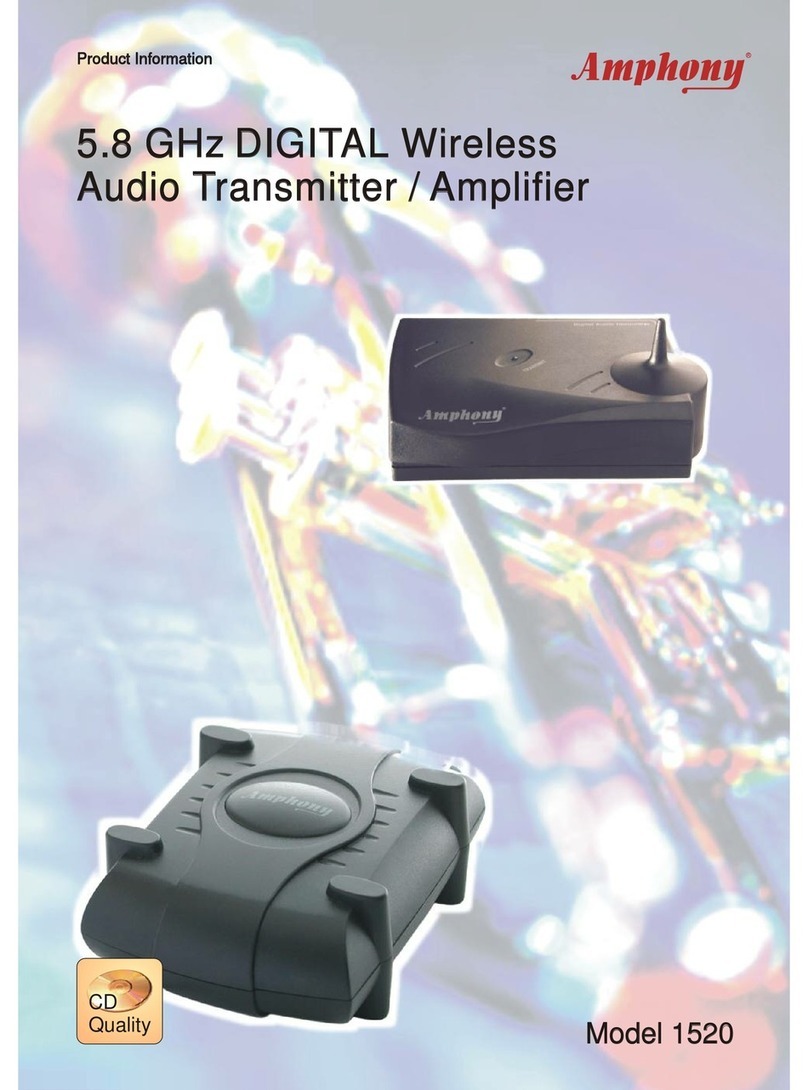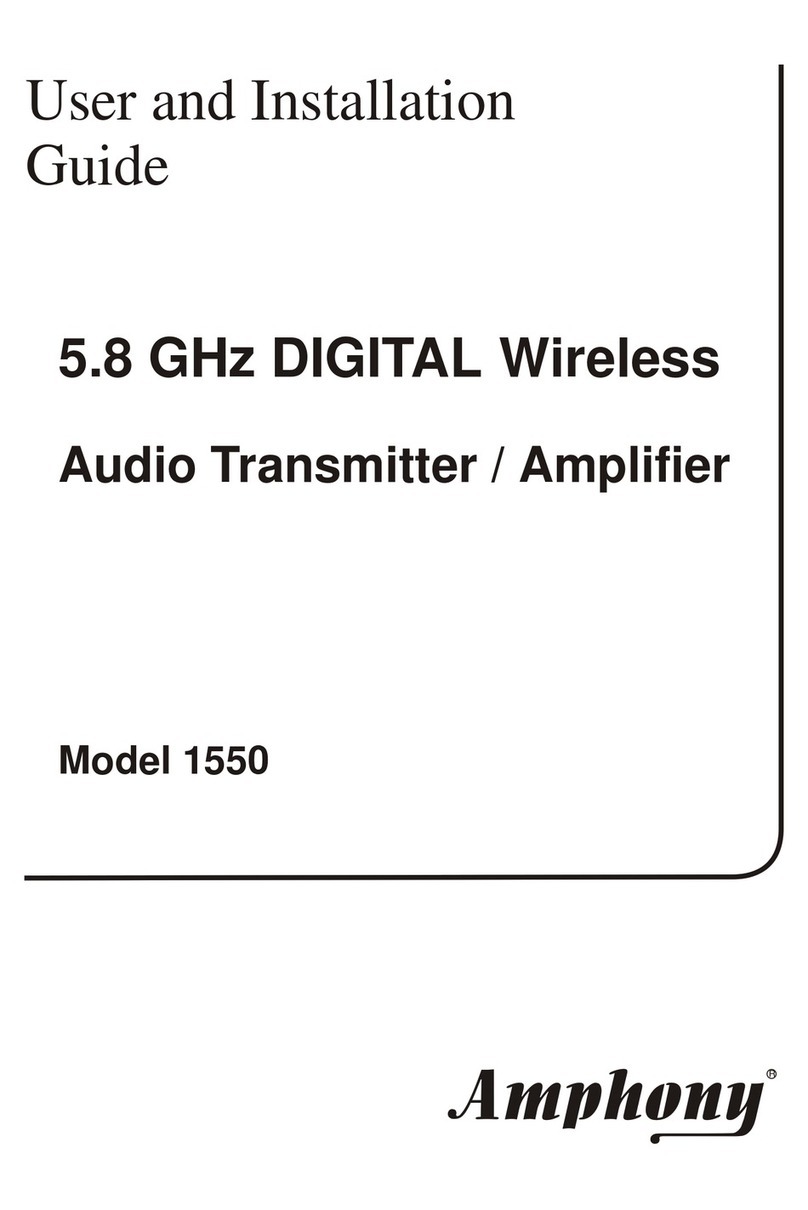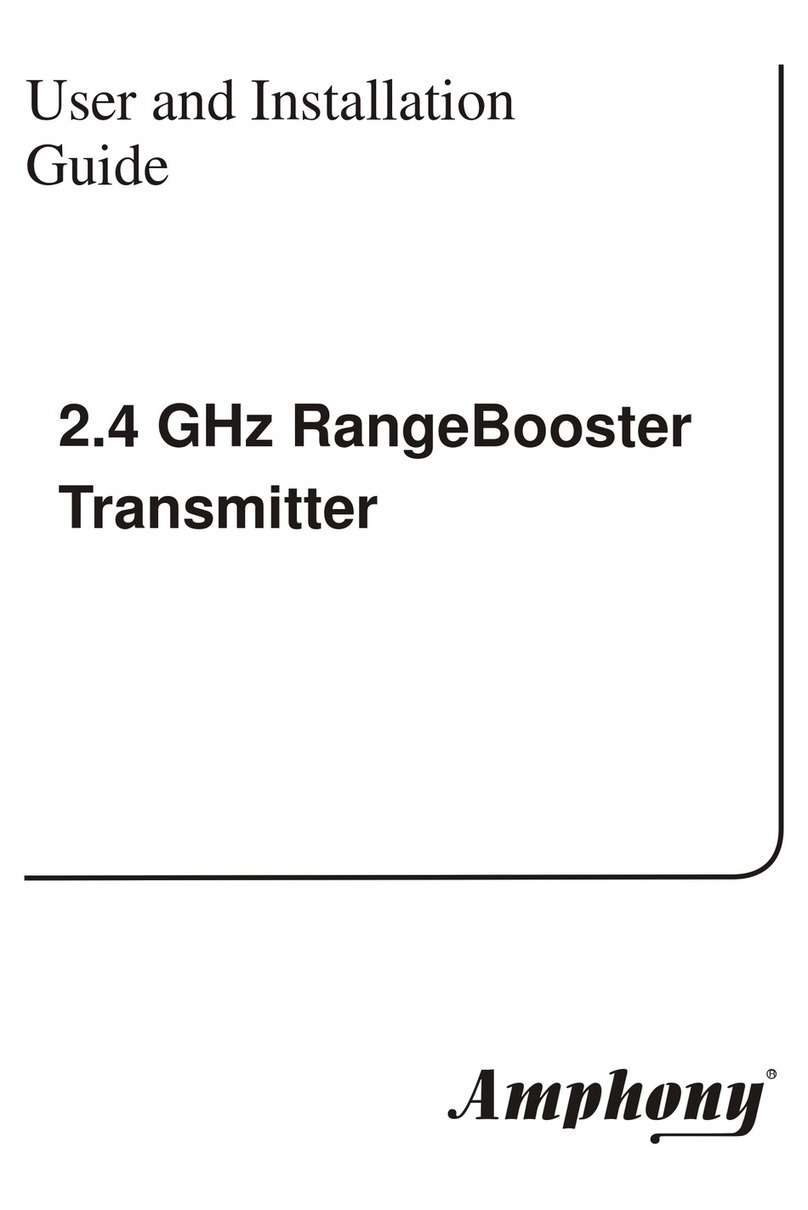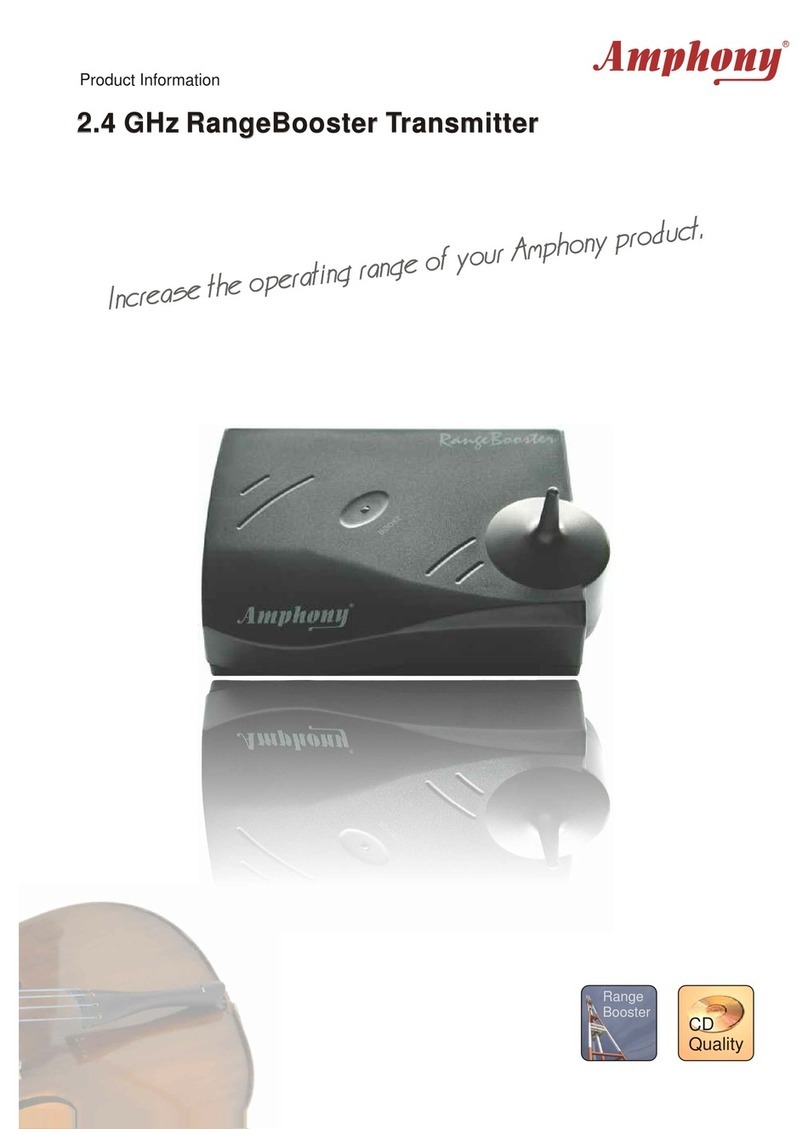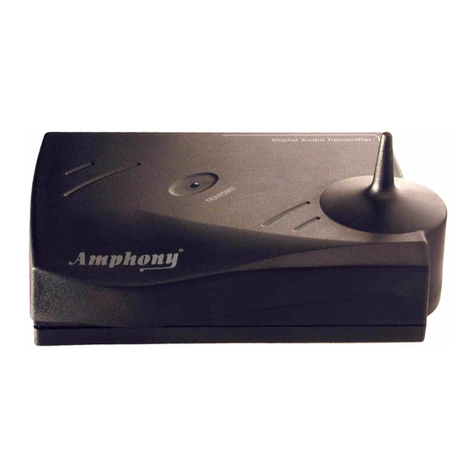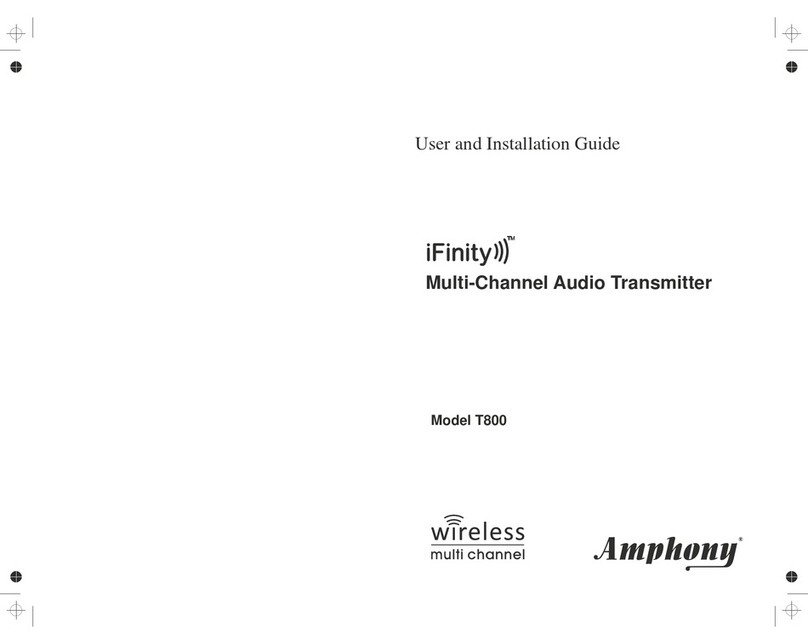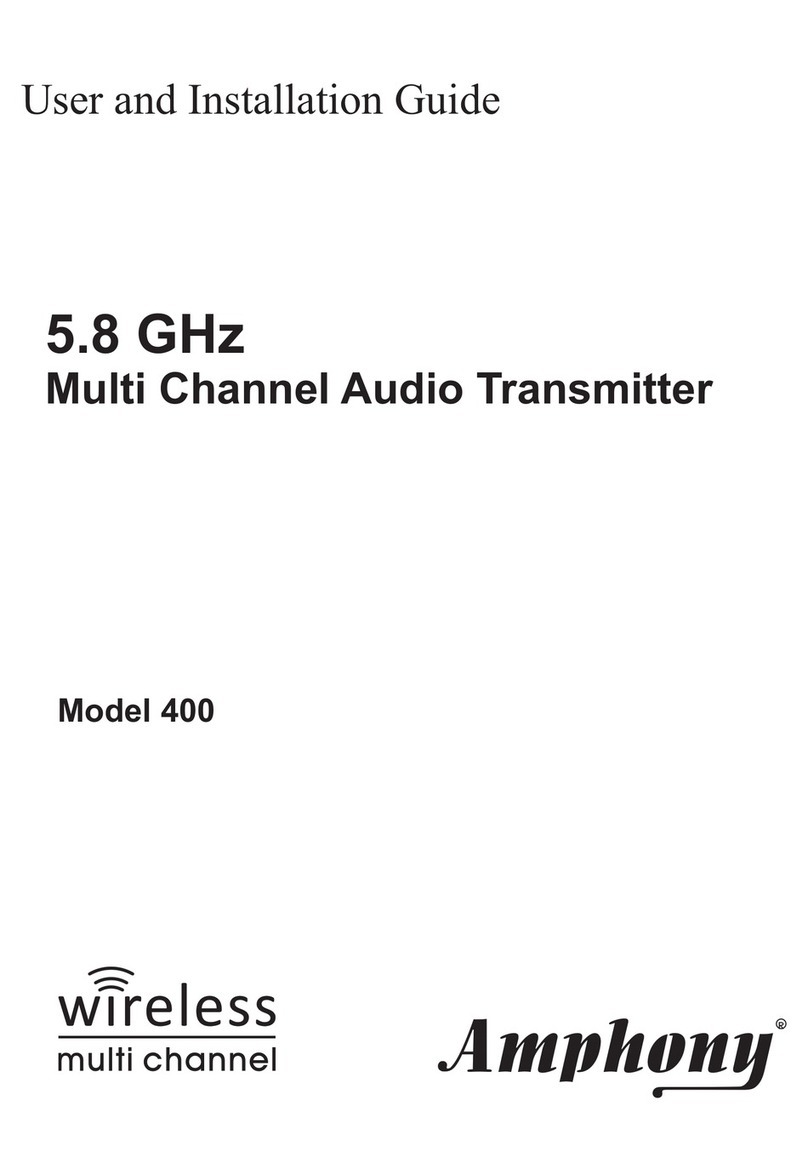User and Installation Guide
R
Step1
Connecting the transmitter
With the transmitter, you can send music from your iPod / iPhone or from any
audio source that either provides a line-level audio signal or amplified speaker
level signal.
Depending on what type of audio signal you wish to transmit, follow one of the
below guidelines:
a) Transmit music from an iPod / iPhone
Place your iPod or iPhone into the iPod cradle located at the top of the
transmitter. Ensure the iPod / iPhone display faces towards the front of the
transmitter.
b) Transmit music from a line-level audio source
Attach the small silver jack of the supplied Y adapter audio cable to the line
level audio input of the transmitter. Then connect the two RCA plugs to your
audio source.
c) Transmit music from an amplified source
In order to transmit music from an amplified audio source, attach the two
supplied speaker cables to the speaker outputs of your source and then to the
speaker jack of the transmitter. Please ensure the correct polarity of the cable.
The transmitter can also be connected to other audio outputs by using an
appropriate adapter.
Finally, connect the supplied small AC adapter’s barrel-shaped plug into the
DC 9V jack, and then plug the transformer into a standard AC outlet. We
recommend the use of a surge protector to protect the transmitter from power
surges.
Unpacking: Check that this package contains:
One audio transmitter, one audio receiver, two AC adapters, two audio cables.
Page 2







